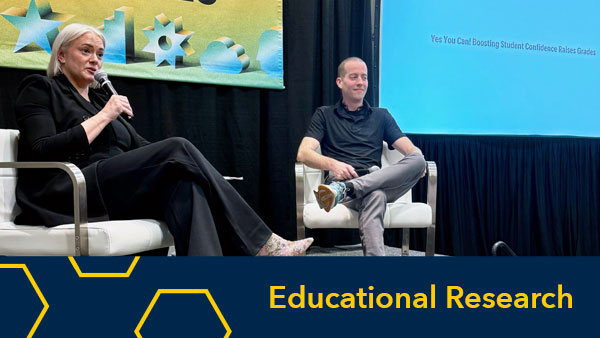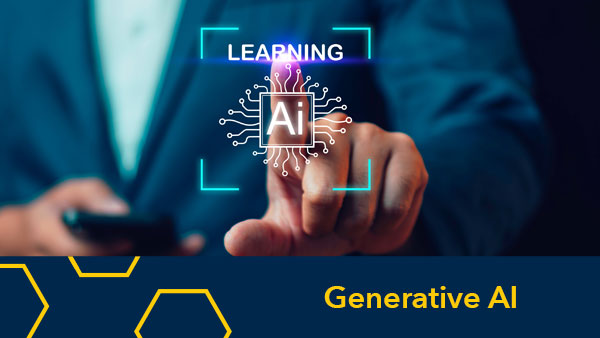Elyse Aurbach, Public Engagement Lead
@ElyseTheGeek
One observation that led us to convene a group of partners and launch the Conceptualizing Public Engagement (CPE) series was the observation that the words “public engagement” mean different things to different people.
Professional communicators emphasize different aspects of public engagement than scholars working in partnership with local communities. Performance and exhibition artists pursue different forms of engagement work than do those who are working to influence local and national policy. Museums engage visitors and families differently than do groups partnering with business communities. And yet these are all channels and approaches that the University of Michigan uses to engage different publics. We were curious: in addition to the differences between these spaces, publics, interactions, and goals, what are the important similarities, points of connection, and things we might learn from each other as we pursue different forms of public engagement work?
Reflections of Previous Definitions
The task of defining public engagement has been undertaken by others before us – both at and beyond the University of Michigan (U-M). Several examples include:
Engaged Michigan defines civic engagement as: “We develop capacity in partnership with communities, and in doing so, support the University of Michigan’s mission of research, education, and service. Civic engagement at the U-M prepares students, faculty, and staff to work collaboratively through practice, teaching, and research towards these same goals for full participation in a complex, democratic, and just society. We engage with communities around the world to build mutual understanding, to improve the quality of life, and to affect systemic change through developing and integrating the combination of knowledge, skills, values, reflection and motivation to provoke inquiry and affect meaningful change through shared commitment, open communication, partnership, and reciprocity.”
The U-M Public Engagement and Impact focus area articulates three primary areas of public engagement, including policy and advocacy, educational outreach, and media interactions.
The American Association for the Advancement of Science has a different description. “Public engagement with science describes intentional, meaningful interactions that provide opportunities for mutual learning between scientists and the public. Mutual learning refers not just to the acquisition of knowledge, but also to increased familiarity with a breadth of perspectives, frames, and worldviews. Goals for public engagement with science include civic engagement skills and empowerment, increased awareness of the cultural relevance of science, and recognition of the importance of multiple perspectives and domains of knowledge to scientific endeavors.”
What We Heard
During CPE meetings, we asked small groups of participants to work together to come up with a tweet-able definition of public engagement to learn how our community thinks about and articulates the core qualities and values of public engagement.
We analyzed these tweetable definitions across all participants and sessions in order to extract commonalities. The major themes that emerged across most or all definitions that were surfaced during CPE Topic One sessions included:
- Mutual benefit, the idea that interactions between U-M stakeholders and publics should be beneficial to all parties involved, and all stakeholders should be valued for their strengths and appropriately recognized and/or compensated for their contributions.
- Shared authority, the practice of welcoming different perspectives, experiences, and voices to the table, elevating different forms of knowledge, and sharing decision-making power across stakeholders.
- Societal benefit, the belief that public engagement should aim to improve the current state of our society and the world.
We have synthesized the tweetable summaries and themes across participants and sessions into the following definition:

In exploring elements of these themes during CPE meetings, some interesting observations and discussions arose among the participants, including:
Do these qualities reflect our current practices in engaging with different publics, or instead articulate our aspirations of what we would like these interactions to be? Most generally agreed that these descriptors reflected aspirational – not actual – qualities of engagement work at U-M, or that at a minimum we could improve how we engage our publics to better practice these values.
Must the U-M stakeholder be acting within their job duties for it to “count” as public engagement? For example, a graduate student speaking about their work at a local science cafe event may not be acting within the scope of her formal graduate program, but she is using the basis of her expertise to speak about scientific research with a public group. How does this incentivize (or de-incentivize) different kinds of U-M stakeholders to engage or not to engage publicly?
Do the words “public engagement” mean both everything and nothing? In other words, is this definition so broad as to capture most U-M activities and provide too little guidance about what people mean in describing interactions between university and public stakeholders?
Where We’re Going
As we have alluded, we are working to supplement this definition with a preliminary framework to organize and contextualize public engagement and support work across the university, as well as to better articulate and reflect the many types of public engagement efforts that our community undertakes at U-M and beyond. In our next post, we’ll discuss this draft framework.
Please look for posts recapping outcomes of the CPE series with the following schedule, subject to evolution:
| February | The draft Michigan Public Engagement Framework |
| March | Barriers facing our public engagement community |
| April | Next steps |
—–
This post is one part of a set recapping the Conceptualizing Public Engagement series:
- Post 1: Recapping the Conceptualizing Public Engagement Series: Part One
- Post 2: (current post)
- Post 3: Recapping the Conceptualizing Public Engagement Series: Part Three
- Post 4: Coming in March!
- Post 5: Coming in April!
If you missed the CPE series but would like to get involved with the conversations and work moving forward, please email us.
**The Conceptualizing Public Engagement Series was sponsored and co-hosted by the Office of Academic Innovation, the Vice President for Communications, the Vice President for Government Relations, the National Center for Institutional Diversity, the Office of Research, and the Vice Provost for Global Engagement and Interdisciplinary Academic Affairs.


